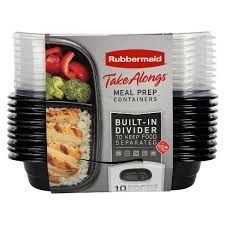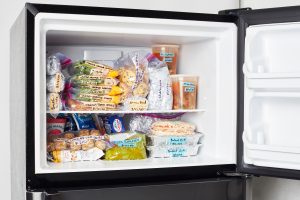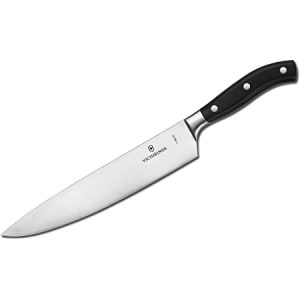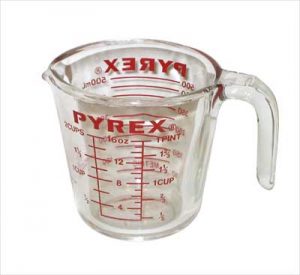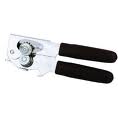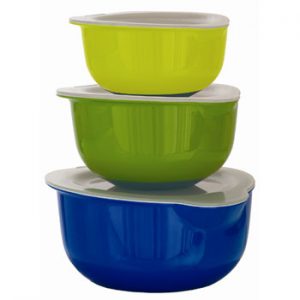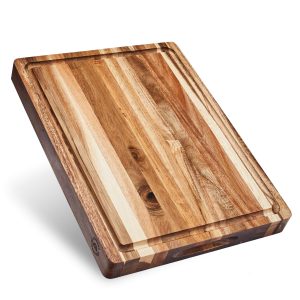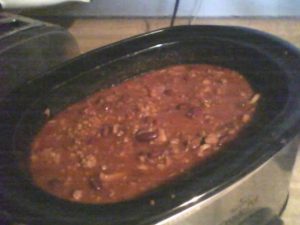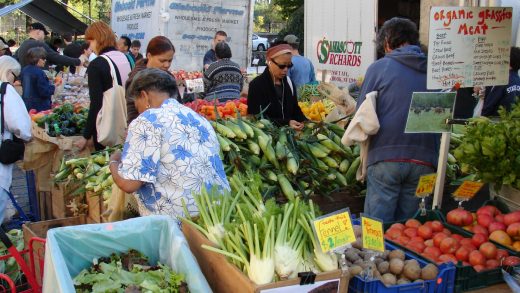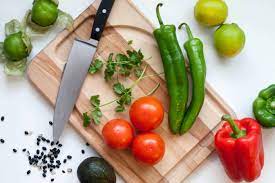Part of the Magic of our Bachelor’s Kitchen Eating Plan is the ability, if you do it right, to concentrate all your week’s food preparation in just one evening a week. Even better, your organizational abilities could cut that time to just an hour. But it takes planning worthy of a battlefield advance.

Where Will You Put Your Prepped Foods Until Needed
Glass and/or plastic containers (with lids!) are best for food storage, no matter how long that will be. Clear containers are preferable as they allow you to see what you have which reduces the likelihood your freshly prepped food will be forgotten. Go for glass if you’re planning to reheat in the same container. Wide-mouth mason jars are inexpensive and great for storing chopped fruits and veggies or salad fixings. Less expensive, plastic containers are good for storing foods that won’t be heated in them–just opt for BPA-free.
Gallon-size plastic storage or freezer bags are perfect for storing large quantities of fruits and veggies, marinating meat, or freezing leftover soups and stews. Sandwich and snack-size bags are ideal for smaller quantities. Freezer bags are thicker than regular plastic bags making them more resistant to moisture and oxygen, making your food less likely to get freezer burn.
Disposable freezer pans are great if you’re planning on freezing ready-to-bake casseroles, pasta dishes, marinara, and more.
Accumulate Essential Tools
When you are preparing your food, you will need lots of little tools. Some are things you need right from the start, and others can be purchased later as you need them. Among those you need to start with are a basic chef’s knife and a paring knife. Both should be sharp enough to cut without using much pressure.
Naturally, you will always need to keep handling a set of measuring cups and spoons. Along with that, I would highly recommend you put a kitchen scale on your list of things to add to your kitchen. It will be far more useful than you think. Plus that’s the only really accurate way to measure ingredients, especially in baking. You should also have some silicone or rubber spatulas and mixing spoons.
Two other tools might be required: a vegetable peeler and a can opener. I know from experience, that a can opener is a “must-have” tool because nothing else really works for that purpose. The vegetable peeler usually comes in two styles, the old-fashioned swivel peeler which works the way you would use a paring knife. More popular among professional chefs is the “Y” peeler. These are a little faster to use but also a little more dangerous. You can cut yourself very easily, so treat these tools with respect.
Dishes Large And Small
You need at least two mixing bowls of various sizes. Many of these come with lids which make them great for prep storage as well as mixing ingredients. Besides that, you might want to have a bunch of small bowls. You can be creative here. But if you can afford it, pinch bowls or ramekins can be very useful in preparing your dish and laying out ingredients ahead of time.
A Cutting Board is also a requirement. Don’t skimp on this, a good cutting board that protects your knives and can be sterilized is a tool you will probably use almost every time you cook. Make sure you get a good one. Acrylic gives you the best of both worlds. They have enough give to not ruin the edge of your knives but are sturdy enough to go into the dishwasher. The second best, in my opinion, is wood or bamboo. While these cannot be sterilized in a conventional way, they have anti-microbial properties. UNDER NO CIRCUMSTANCES SHOULD YOU USE GLASS, CERAMIC, OR STONE cutting surfaces, they will ruin your knives. It helps to have several different cutting boards for different purposes to prevent cross-contamination. For example, you might use your acrylic board for cutting meat, poultry, or seafood while you reserve your wooden board for cutting fruits and vegetables.
Next to that cutting board, you should have a scrap bowl. This saves trips to the trash can or compost. It also allows you to save trimmings for other uses like broth or stock.
Labels and markers are good for making sure you don’t have to guess what the foil-wrapped lamb in the freezer really is. Aluminum foil, wax paper, and parchment paper are also good for food prep jobs.
Another tool I and many cooks and chefs use is a bench or dough scraper. This allows you to corral and move piles of ingredients from your cutting board to the pot.
Bigger Stuff That Make Cooking Easier
Kitchen appliances can quickly clutter your working surfaces, making cooking more difficult and time-consuming. But there are some that are useful for a multitude of kitchen chores. Slow cookers are great for cooking soups, stews, or other one-pot dishes while you are at work. Of course, a small version would work well for a single person. But big ones make great week-long soups or chili.
Rice Cookers are a mixed blessing for me. I have many Asian friends who use rice cookers. They like their rice very plain and a little clumpy. A rice cooker does that perfectly. But I still prefer to make rice the old-fashioned way with a pot on the stovetop. However, rice cookers can also be really great for cooking just about any kind of grain, steaming vegetables, and cooking beans. People who eat a lot of rice might find this appliance to be essential.
A Food Processor can save oodles of time chopping vegetables. It is almost essential for making pie dough. This appliance opens a whole new world of cuisine. Can you live without it? Absolutely. But for some cooks, it’s a valuable tool.
Like the food processor, a blender can be a useful tool. An immersion blender can help you with soups and stews. A freestanding blender is great for smoothies and sauces.
